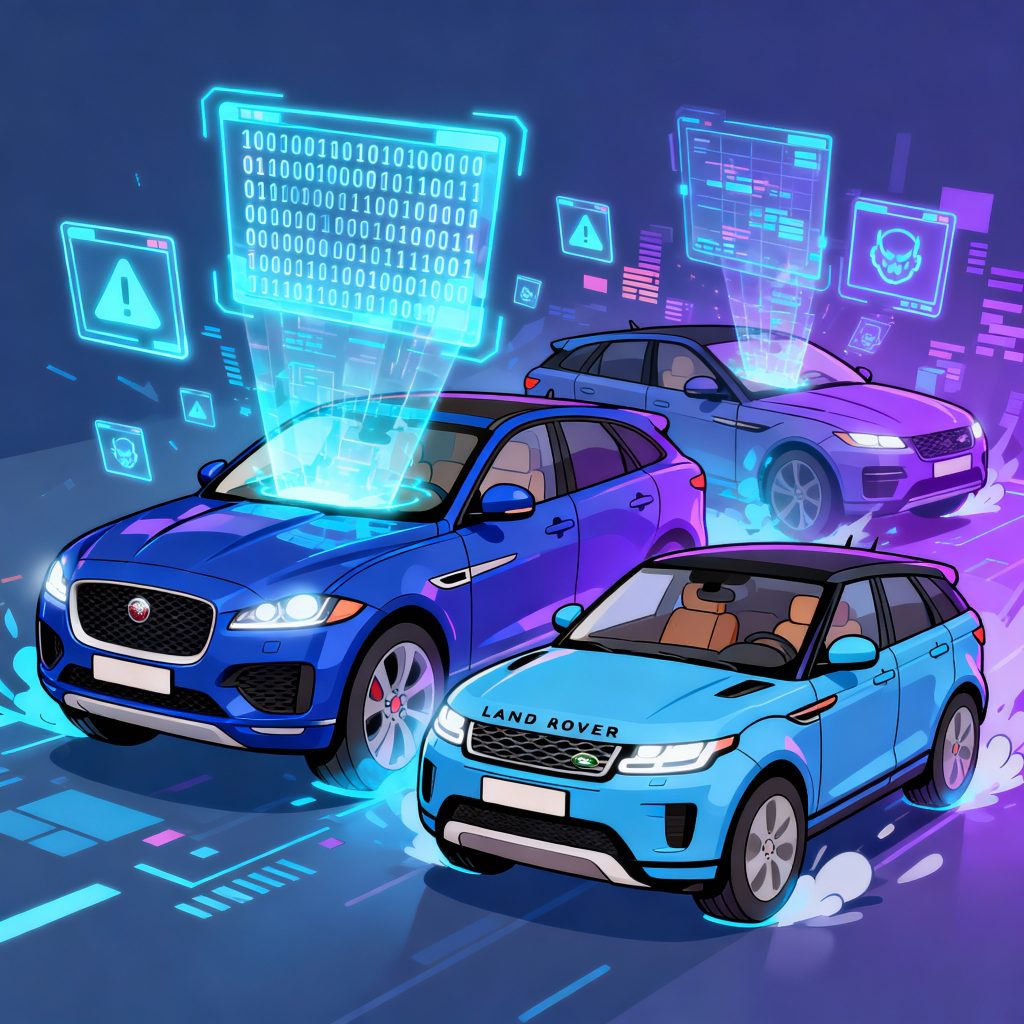When the Jaguar Land Rover cyberattack made headlines, it sent shockwaves through the automotive industry and highlighted critical vulnerabilities in modern vehicle manufacturing systems. This sophisticated breach affected one of the world’s most prestigious luxury car manufacturers, demonstrating that no organization is immune to cyber threats. The attack disrupted production facilities, compromised sensitive data, and forced the company to temporarily shut down several manufacturing operations. Understanding this incident provides valuable insights into the evolving landscape of automotive cybersecurity and the urgent need for comprehensive protection strategies.
Understanding the Jaguar Land Rover Security Incident
Timeline of the Attack
The Jaguar Land Rover cyberattack began with what security experts believe was a sophisticated phishing campaign targeting employees with elevated system access. Attackers gained initial entry through compromised credentials, then moved laterally through the network over several weeks before launching their primary assault on critical manufacturing systems.
The breach became apparent when production lines at multiple facilities experienced simultaneous shutdowns. IT teams discovered encrypted files across numerous servers, along with ransom demands from the attackers. The incident forced the company to isolate affected systems and implement emergency protocols to prevent further damage.
Investigation revealed that the attackers had maintained persistent access for approximately three months before executing their final payload. During this time, they conducted extensive reconnaissance, mapping network architecture and identifying high-value targets including intellectual property databases and customer information systems.
Scale and Impact Assessment
The automotive cybersecurity breach affected multiple Jaguar Land Rover facilities across different continents. Production facilities in the United Kingdom, Slovakia, and India experienced varying degrees of disruption, with some plants remaining offline for several days while security teams worked to restore operations.
Customer data potentially exposed included personal information from warranty databases, service records, and loyalty program memberships. While the company stated that credit card information was not compromised, the incident highlighted the extensive data collection practices common in modern automotive manufacturing.
The attack also impacted supply chain partners and dealers who relied on JLR’s systems for inventory management, parts ordering, and customer service operations. This cascading effect demonstrated how cybersecurity incidents in major manufacturers can ripple throughout entire industry ecosystems.
Anatomy of Modern Automotive Cyber Threats
Unique Vulnerabilities in Car Manufacturing
Modern automotive manufacturers face unique cybersecurity challenges that distinguish them from other industries. Manufacturing systems often rely on legacy industrial control systems that were designed for reliability and efficiency rather than security. These systems frequently lack modern security controls and cannot be easily updated or patched.
The convergence of IT and operational technology (OT) systems creates additional attack vectors. Attackers who gain access to corporate networks can potentially pivot to manufacturing systems, causing production disruptions or even safety hazards. This car manufacturer data breach pattern has become increasingly common as cybercriminals recognize the high-value targets within automotive infrastructure.
Connected vehicle technologies introduce another layer of complexity. As vehicles become more connected and autonomous, manufacturers must secure not only their internal systems but also the millions of vehicles they produce. Each connected car represents a potential entry point into corporate networks if proper security boundaries are not maintained.
Evolution of Automotive Cyber Attacks
The automotive industry has witnessed a dramatic evolution in cyber attack sophistication over recent years. Early attacks primarily targeted individual vehicles or focused on theft-related activities. However, modern attacks increasingly target manufacturers’ intellectual property, customer data, and production capabilities.
Ransomware attack automotive industry incidents have become particularly prevalent. Attackers recognize that manufacturing disruptions create immediate pressure for payment, as production shutdowns cost millions of dollars per day. This economic reality makes automotive manufacturers attractive targets for ransomware groups.
Nation-state actors have also shown increased interest in automotive targets, seeking to steal advanced manufacturing techniques, autonomous vehicle research, and electric vehicle technologies. These sophisticated adversaries often maintain long-term access to networks, gathering intelligence over extended periods.
Technical Analysis of the Attack Methodology
Initial Access and Persistence
The Jaguar Land Rover attack began with a carefully orchestrated spear-phishing campaign targeting specific employees in IT and engineering roles. Attackers researched their targets through social media and professional networks, crafting highly personalized messages that appeared to come from trusted colleagues or business partners.
Once initial access was established, the attackers deployed sophisticated persistence mechanisms including scheduled tasks, registry modifications, and legitimate system tools used maliciously. They avoided traditional malware signatures by leveraging “living off the land” techniques that use legitimate system utilities for malicious purposes.
The attackers demonstrated advanced knowledge of Active Directory environments, escalating privileges through a combination of credential harvesting and exploitation of misconfigurations in the network architecture. This progression from initial access to domain administrator privileges occurred over several weeks, allowing them to establish multiple fallback positions.
Lateral Movement and Reconnaissance
After gaining initial foothold, the attackers conducted extensive network reconnaissance to understand the organization’s structure and identify high-value systems. They used legitimate network administration tools to map internal networks, identify critical servers, and locate sensitive data repositories.
The JLR security incident revealed sophisticated lateral movement techniques including Pass-the-Hash attacks, Kerberos ticket manipulation, and exploitation of trust relationships between different network segments. Attackers moved carefully through the environment, avoiding detection while gathering intelligence about production systems and data assets.
During the reconnaissance phase, attackers identified and cataloged intellectual property repositories, customer databases, and manufacturing control systems. This systematic approach allowed them to maximize the impact of their final payload deployment while maintaining persistent access for future operations.
Industry-Wide Implications
Supply Chain Security Concerns
The Jaguar Land Rover cyberattack highlighted critical vulnerabilities in automotive supply chain security. Modern vehicle manufacturing involves hundreds of suppliers providing everything from raw materials to sophisticated electronic components. Each supplier connection represents a potential attack vector that adversaries can exploit.
Tier-1 suppliers often have direct connections to manufacturer networks for inventory management, quality control, and collaborative design processes. If these connections lack proper security controls, they can provide attackers with privileged access to manufacturer systems. The interconnected nature of automotive supply chains means that a breach at any supplier can potentially impact the entire ecosystem.
Just-in-time manufacturing practices, while efficient, create additional security challenges. The need for real-time coordination between suppliers and manufacturers often requires direct system connections that may bypass traditional security perimeters. Securing these connections without disrupting critical business processes requires sophisticated network architecture and continuous monitoring.
Regulatory and Compliance Ramifications
The incident occurred amid increasing regulatory scrutiny of automotive cybersecurity practices. The European Union’s type approval regulations now require automotive manufacturers to demonstrate comprehensive cybersecurity risk management throughout vehicle lifecycles. Similar regulations are being developed in other major automotive markets.
Data protection regulations like GDPR add another layer of complexity. When customer data is compromised in automotive breaches, manufacturers face potential fines that can reach 4% of global annual revenue. The Jaguar Land Rover incident triggered investigations by multiple data protection authorities, highlighting the global nature of regulatory compliance in automotive cybersecurity.
Industry standards organizations have responded by developing more stringent cybersecurity requirements for automotive manufacturers. These standards address everything from secure software development practices to incident response procedures, creating new compliance obligations for manufacturers worldwide.
Lessons Learned for Automotive Cybersecurity
Infrastructure Hardening Strategies
The attack revealed critical gaps in network segmentation between corporate IT systems and manufacturing operations. Effective protection requires robust isolation between these environments, with carefully controlled access points monitored by security teams. Organizations must implement zero-trust principles that verify every connection attempt rather than relying on network perimeter defenses.
Regular vulnerability assessments become essential for identifying potential attack vectors before criminals can exploit them. These assessments should cover not only traditional IT infrastructure but also industrial control systems, IoT devices, and supplier connections. Automated scanning tools can help identify known vulnerabilities, while manual penetration testing can uncover complex attack chains.
Backup and recovery systems require special attention in automotive environments. Manufacturing data, intellectual property, and customer information all need robust backup strategies that can withstand ransomware attacks. Immutable backup systems that cannot be encrypted by attackers provide critical insurance against data loss incidents.
Employee Training and Awareness Programs
Human factors played a crucial role in the initial compromise, emphasizing the importance of comprehensive security awareness training. Automotive employees face unique social engineering threats that leverage industry-specific knowledge and relationships. Training programs must address these specific risks while providing practical guidance for recognizing and reporting suspicious activities.
Phishing simulation exercises help identify vulnerable employees while providing safe learning opportunities. These simulations should reflect realistic attack scenarios that automotive employees might encounter, including supplier communications, regulatory notices, and industry conference invitations that attackers commonly impersonate.
Incident reporting procedures must be clearly communicated and easily accessible. Employees who suspect security incidents need simple, fast ways to report concerns without fear of blame or punishment. Creating a positive security culture encourages proactive reporting that can prevent minor incidents from becoming major breaches.
Recovery and Response Strategies
Immediate Incident Response Actions
The Jaguar Land Rover response demonstrated both effective practices and areas for improvement in automotive incident response. The company’s decision to immediately isolate affected systems prevented further damage, even though it caused significant production disruptions. This trade-off between business continuity and security containment represents a critical decision point in automotive incident response.
Communication strategies during the incident balanced transparency with operational security. The company provided regular updates to stakeholders while avoiding details that could assist other attackers. Effective crisis communication requires pre-established relationships with media, customers, regulators, and law enforcement agencies.
Forensic investigation capabilities proved crucial for understanding the attack scope and preventing reinfection. Automotive manufacturers should maintain relationships with specialized incident response firms that understand both cybersecurity and industrial control systems. These partnerships enable rapid response when incidents occur.
Long-Term Security Improvements
Post-incident analysis revealed opportunities for fundamental security architecture improvements. The company invested in advanced threat detection systems that provide better visibility into network activities, particularly at the boundaries between IT and OT systems. These systems use machine learning to identify anomalous behaviors that might indicate ongoing attacks.
Employee security training received significant enhancement following the incident. New programs address automotive-specific threats while providing hands-on exercises that help employees recognize and respond to suspicious activities. Regular refresher training ensures that security awareness remains current as threats evolve.
Supply chain security programs expanded to include more comprehensive vendor assessments and continuous monitoring capabilities. These improvements help identify potential risks before they can impact manufacturing operations or customer data security.
Future of Automotive Cybersecurity
Emerging Threat Trends
The automotive industry faces increasingly sophisticated threats as vehicles become more connected and autonomous. Future attacks may target vehicle safety systems directly, potentially causing physical harm in addition to financial losses. Manufacturers must prepare for scenarios where cyber attacks could impact vehicle operation rather than just manufacturing systems.
Artificial intelligence and machine learning technologies will likely play prominent roles in both future attacks and defenses. Attackers may use AI to automate reconnaissance, customize social engineering campaigns, and identify vulnerabilities more efficiently. Defenders must leverage similar technologies to detect and respond to these advanced threats.
Cloud adoption in automotive manufacturing creates new attack vectors that require specialized security expertise. As manufacturers migrate critical systems to cloud platforms, they must ensure that security controls adapt appropriately to these new environments while maintaining the reliability required for manufacturing operations.
Building Organizational Resilience
Organizations must develop comprehensive incident response capabilities that address the unique challenges of automotive cybersecurity. This includes establishing relationships with specialized forensic firms, developing communication protocols for multiple stakeholders, and creating business continuity plans that account for extended production disruptions.
Investment in cybersecurity talent becomes critical as the threat landscape evolves. Automotive manufacturers need professionals who understand both traditional IT security and the unique requirements of manufacturing environments. Training existing staff and recruiting specialized talent helps build the expertise needed for effective defense.
FAQ Section
What was the primary attack vector used in the Jaguar Land Rover cyberattack?
The attack began with sophisticated spear-phishing emails targeting specific employees with elevated system access, allowing attackers to gain initial network entry and establish persistent access over several months.
How long did the Jaguar Land Rover production shutdown last after the cyberattack?
Production disruptions varied by facility, with some plants remaining offline for several days while security teams restored operations and verified system integrity before resuming manufacturing.
What type of data was potentially compromised in the JLR security incident?
The breach potentially exposed customer warranty information, service records, loyalty program data, and internal manufacturing data, though the company stated that credit card information was not compromised.
How did the cyberattack affect Jaguar Land Rover’s supply chain partners?
The attack impacted dealers and suppliers who relied on JLR systems for inventory management, parts ordering, and customer service operations, demonstrating the cascading effects of automotive cybersecurity incidents.
What immediate steps did Jaguar Land Rover take to contain the cyberattack?
The company immediately isolated affected systems to prevent further damage, implemented emergency protocols, engaged cybersecurity experts, and coordinated with law enforcement agencies for investigation support.
What long-term security improvements has Jaguar Land Rover implemented since the attack?
The company enhanced threat detection systems, expanded employee security training programs, improved supply chain security assessments, and strengthened network segmentation between IT and manufacturing systems.
How has the Jaguar Land Rover cyberattack influenced automotive industry cybersecurity practices?
The incident has accelerated adoption of zero-trust security architectures, prompted stronger supply chain security requirements, and influenced regulatory discussions about mandatory cybersecurity standards for automotive manufacturers.
The Jaguar Land Rover cyberattack serves as a critical case study for understanding modern automotive cybersecurity challenges. Organizations must implement comprehensive security strategies that address the unique risks facing automotive manufacturers while maintaining the operational efficiency essential for competitive success. Proactive investment in cybersecurity capabilities, employee training, and supply chain protection provides the foundation for resilient operations in an increasingly connected automotive landscape.











